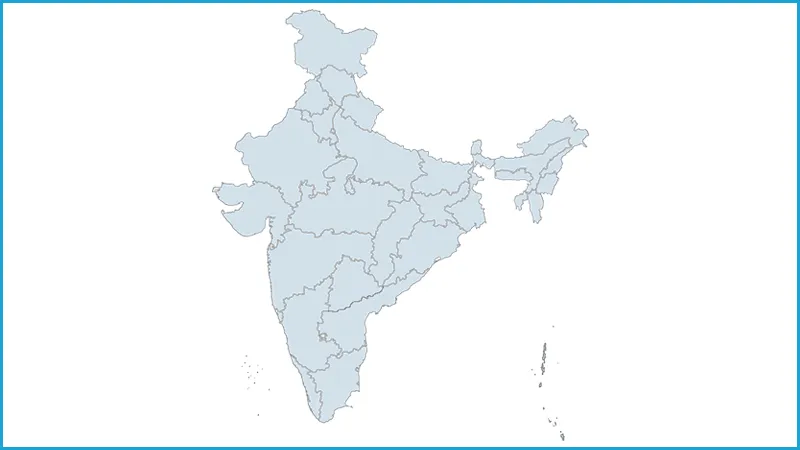As units of political and economic reckoning, states have come into their own and two recent but different episodes have emphasised this. The passing of the Goods and Services Tax (GST) constitutional amendment and the creation of the GST Council gives states greater authority in fiscal policy than before. On the other hand, the Cauvery dispute between Karnataka and Tamil Nadu has made apparent that strongly regional politics sometimes renders compromise difficult.
Nevertheless, whether as a political challenge or an economic trigger, the salience and empowerment of states is set to rise. There is hope that a sense of competition will get states to push each other in attracting investment and business opportunities, incubating manufacturing and innovation, and growing the overall Indian economy. India is making up for lost time. It is devolving powers to states and provinces in the manner China did in the late 1970s and 1980s, a decade in which Indira Gandhi did everything that was possibly wrong.
Having said that, is a template for the 1980s or 1990s true for the 2020s? Are states already yesterday’s story, and are < class="aBn" tabindex="0" data-term="goog_954701818">< class="aQJ">tomorrow’s units of economic reckoning clusters and megaregions that will inevitably run across state boundaries? Consider some numbers. India’s GDP is today valued at $2 trillion. Amitabh Kant, chief executive of Niti Aayog, says if all goes well it could touch $10 trillion by 2032. A shorter-term assessment would have it reaching $5 trillion in the next decade, by 2025-26.
< class="m_-1661694271051237289gmail-TypographyTag m_-1661694271051237289gmail-TypographyTag12">How will this $5 trillion GDP be distributed? About two-thirds of it will be located in three megaregions. First, the National Capital Region, comprising Delhi, Gurgaon and Noida, but frankly stretching to a variety of other locations: from Jaipur-Ajmer to Meerut to Gwalior.
Second, there is the Mumbai-Pune-Thane belt, extending by way of the National Highway to Ahmedabad and constituting the southern end of the Delhi-Mumbai Industrial Corridor.
< class="m_-1661694271051237289gmail-TypographyTag m_-1661694271051237289gmail-TypographyTag13">Third, there is the 350 km stretch from Chennai to Bengaluru. Linking two states currently divided by the waters of the Cauvery, this stretch is being developed, with Japanese support, as an industrial corridor driven by technology, innovation and high-end, precision manufacture.
< class="m_-1661694271051237289gmail-TypographyTag m_-1661694271051237289gmail-TypographyTag1">It is a reasonable bet, borne out by statistical modelling, that < class="aBn" tabindex="0" data-term="goog_954701819">< class="aQJ">in 10 years each of these three megaregions will individually have a $1 trillion GDP. If one uses Indian history as a reference point, what is being anticipated is the creation of three large regional empires: a Deccan-peninsular empire, a western empire and an empire in the northern heartland. Of course, these will be accompanied by wealthy but smaller territories such as the Hyderabad megapolis and Andhra Pradesh, but that is another story.
< class="m_-1661694271051237289gmail-TypographyTag m_-1661694271051237289gmail-TypographyTag11">Unlike the empires of the past, the three megaregions will not be governed by one sovereign. Their stakeholders will be a very diverse group of consumers and producers, investors and migrant workers, coming from far away, including from eastern India, where the youth bulge is prominent. More tellingly, the megaregions will be formally distributed over a number of states and jurisdictions. How will the politics keep up with the economics? The current instinct of competition will then have to give way to one of cooperation and co-ownership.
< class="m_-1661694271051237289gmail-TypographyTag m_-1661694271051237289gmail-TypographyTag16">On another note, in terms of infrastructure are any of these would-be megaregions trillion-dollar GDP compatible? Take an example. India became a $1 trillion GDP economy in 2007-08. At that stage, it had two busy and overstretched international airports, Mumbai and Delhi, with Chennai, Bengaluru and a host of other cities sharing the rest of the international aviation traffic. It was not enough and it was a shame. Gradually airports were upgraded. It is a fair bet that a $1 trillion GDP economy, especially with India’s population, could sustain three or four major international airports and four to six somewhat smaller but very busy ones.
< class="m_-1661694271051237289gmail-TypographyTag m_-1661694271051237289gmail-TypographyTag15">Each of the megaregions will need such capacity < class="aBn" tabindex="0" data-term="goog_954701820">< class="aQJ">in 10 years. Where is it going to come from? The NCR has one, admittedly impressive international airport. Work on a long-delayed second airport, in western Uttar Pradesh, is finally starting. To be honest, planning for a third international airport in the broader NCR megaregion expanse should also start, not to mention half-a-dozen smaller airports. They will all be needed < class="aBn" tabindex="0" data-term="goog_954701821">< class="aQJ">in 10 years.
< class="m_-1661694271051237289gmail-TypographyTag m_-1661694271051237289gmail-TypographyTag14">How will people commute in these megaregions? Our current model of commuter trains is city-specific. Indian Railways, which would prefer to run long-distance trains rather than city-commuter trains, wants to gradually hand over local trains to state and city governments. Yet, the three megaregions will need wider connectivity, and megaregion-wide transport and rail corporations that will have ownership of all participating stakeholders and state governments. Where is the institutional design for this? Is India’s politics ready to even discuss it?
Economic megaregions exist in every major country. In the American Northeast, for example, the Boston-Washington, DC, corridor (running though New York and Philadelphia) has a GDP about as large as Germany’s. A megaregion is recognition of the fact that business ecosystems and complementarities cannot be curbed by state boundaries and will tend to overwrite political maps. That’s why states as a category are becoming obsolete. India’s future for much of the coming 25 years at least will be shaped in its three emergent megaregions.
This commentary originally appeared in The Times of India.
The views expressed above belong to the author(s). ORF research and analyses now available on Telegram! Click here to access our curated content — blogs, longforms and interviews.




 PREV
PREV


